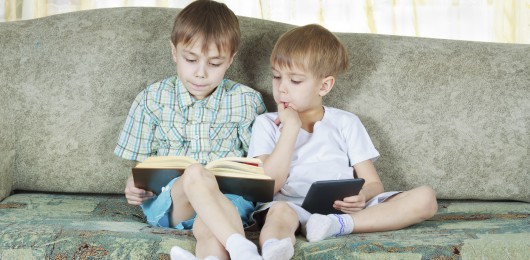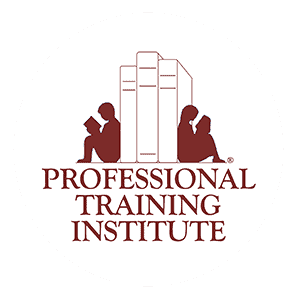
Since the release of the Kindle, Nook, and iPad, e-readers have become very popular, and so has the debate between e-books and print. A 2012 Pew Research Center survey found that the average number of books read on an e-reader is 24, compared to 15 books for those reading print.(1) E-books are convenient, often less expensive, offer a number of accommodations, and can now be accessible across a variety of devices. However, research suggests that there may be a difference in how we comprehend text across each format.
A 2014 study conducted by Anne Mangen of Norway’s Stavanger University found that readers of a short mystery novel on a Kindle performed significantly worse in remembering the order of events than those who read the same story in paperback. She concluded that “the haptic and tactile feedback of a Kindle does not provide the same support for mental reconstruction of a story as a print pocket book does.”(2) Reading on a screen may also promote the skimming of text, rather than deep reading. In fact, in 2006, a study found that readers follow an “F” pattern when reading on a screen, reading the top line, but primarily scanning the remainder of the text along the left side.(3) This nonlinear reading reduces comprehension and inhibits the reader’s ability to sit down with a longer piece of text. Maryanne Wolf, a Tufts University neuroscientist, worries that “the superficial way we read during the day (on screens) is affecting us when we have to read with more in-depth processing.”(4)
For our youngest readers, it’s hard to imagine curling up with an e-reader—and there is a reason for that! One of the earliest pre-reading skills is the act of turning a page, a non-existent experience when using an e-reader. This tactile experience may help to increase attention to the book. Studies have shown that parents have richer conversations when reading a print book to their child versus an e-book. With a print book, parents are more likely to point out pictures and ask questions. When reading to a child on an e-reader, the focus of the conversation usually surrounds the actual technology and special features, like animation, rather than the content of the story itself.
However, the accessibility of an e-reader can break access barriers that may be found with a print book. An e-reader offers a variety of built-in accommodations that can benefit all types of readers. For the reader that may need to increase text size, this can be done with the click on a button. If the phonetic pronunciation of a word is required, this is readily available. Text-to-speech features are also available and accommodating for all types of readers. The use of a built-in dictionary that provides definitions can help to build vocabulary across all ages. For the reader who may have physical limitations with holding a book and turning the pages, an e-book can be voice-activated to turn pages.
So what’s the bottom line? All readers have much to gain from both formats of a book. For younger readers, exposure to print is an important experience. As students age, depending on the needs and preferences of the reader, the choice should be up to them. Some may prefer the accessibility offered by an e-reader, and others may prefer the experience reading a print book. At the end of the day, reading is reading, and no matter the format or the content, it is an opportunity to engage in an activity that is beneficial in so many ways.
(1) Rainie, L., Zickuhr, K., Purcell, K., Madden, M., & Brenner, J. (2012). The rise of e-reading. PewResearchCenter
(2) Magen, A., Walgermo, B., & Bronnick, K. (2013). Reading linear texts on paper versus computer screen: Effects on reading comprehension. International Journal of Educational Research.
(3) Nielsen, J. (2006). F-shaped pattern for reading web content. Nielsen Norman Group.
(4) Fleischaker, J. (2014). Is the way we read online hurting our capacity for deep reading? Melville House.










Jaydin Skinner says: